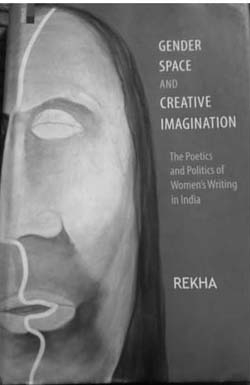Rekha’s book attempts to chart the complex terrain of women’s writing in post-Independence India, while declaredly wishing to avoid the pitfalls of the ‘generalizations’ that are attendant on both mainstream Women’s Studies methodologies and what she calls ‘Indo-centric’ approaches to the subject. Rekha also wishes to address what she considers a significant gap in the existing oeuvre of critical work on women’s writing in India: the privileging of the ‘temporal axis’ and the insufficient attention paid to the politics of space in the shaping of women’s experience, especially as reflected in the literature produced by them. In view of this, she makes what she calls a ‘representative sampling’ of women’s prose fiction from the country, choosing the work of five major writers: Krishna Sobti (Hindi, b. 1925), Mahasweta Devi (Bengali, b. 1926), Kamal Desai (Marathi, 1928–2011), Ambai (her pseudonym, she writes as C.S. Lakshmi when she writes as a critic in Tamil and English, b. 1944) and Githa Hariharan (English, b. 1954).
It is indeed, extremely important to consider analytically the importance of space in the literary production of women writers from India. Rekha goes on to chart this territory through the course of four chapters organized thematically where she analyses the work of the five writers. She also wishes to step out of the ‘quest’ modality of reading women’s narratives as evolutionary discoveries of the self that must be mapped across a linear and temporal axis (perhaps as a sort of feminist ‘bildungsroman’, even though she does not mention this). So within the existing methodological limitations, according to the author, ‘time’ has been seen as rich with analytical possibilities, while ‘space’ has appeared merely as ‘background’ undeserving of much critical comment. While taking the author’s point that such a methodological blindness would indeed be unfortunate for gender-sensitive (if not feminist) readings of texts written by women, one would have wished for some examples of where such critical myopia has indeed been in operation within the field of feminist literary criticism in India to make it easier to understand the critical need for an intervention.
‘Threshold and Beyond’ is the first chapter that gets into a close reading of the five representative writers’ works. It is avowedly concerned with how patriarchal power configures itself around spatial divisions, restrictions, enclosures, divisions and manipulations. Rekha suggests that gendered spatialization creates ‘insides’ and ‘outsides’ marked and divided by thresholds (physical, moral and emotional) the crossing of which always constitute transgressions. She tries to map the representation of these spatial transgressions within the chosen literary texts. The author refers to Malashri Lal’s work The Law of the Threshold, however, several other significant theoretical works on the subject remain untouched upon. There is a rich body of writing on the question of the formation of ideas of public/private, inside/ outside, ghar/bahir, with the coming of colonial modernity in late 19th and early 20th century India—especially amongst women of the upper and middle castes/classes, who, according to Rekha’s own admission remain the subjects of the literary works of four out of five of her chosen writers.

